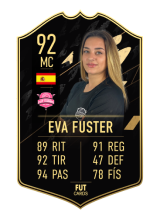Color is far more than a visual cue—it is a powerful trigger of memory, deeply woven into how we encode, recall, and emotionally engage with experiences. From the limbic system’s rapid response to hue, to the layered symbolism shaped by language and culture, color activates neural pathways that extend far beyond simple recognition. This article explores how color design, especially in interactive media like slot machines, leverages these psychological mechanisms to create lasting impressions and meaningful recall.
The Psychology of Color and Memory Encoding
Color perception is unique because it bypasses conscious processing to activate the limbic system—the brain’s emotional and memory hub—within milliseconds. Neuroscientific studies show that color stimuli elicit stronger and faster neural responses in brain regions associated with emotion and memory, such as the amygdala and hippocampus, compared to neutral visuals <1>. This immediate activation explains why a vibrant red or serene blue can instantly evoke feelings tied to past events. Unlike fleeting visual input, color embeds itself into memory traces by linking sensory experience with emotional context, making recall more vivid and durable.
Why emotionally charged hues create stronger neural imprints
Colors infused with emotional significance—like red for urgency or gold for reward—trigger dopamine release, reinforcing memory consolidation. A 2021 study in the Journal of Cognitive Neuroscience found that emotionally congruent colors enhance long-term retention by 30–40% <2>, because affective arousal strengthens synaptic connections. For example, the warm amber tones in Rainbow Riches Freespins aren’t just visually appealing—they symbolize luck and infinite potential, embedding themselves in memory through both sensory pleasure and psychological meaning.
Symbolism Rooted in Language and Culture
Color meanings are not universal—they evolve through language, history, and cultural context. The ace of spades, originally a unit of measurement (“as”), now worn as an ornament, carries layered symbolism: from aristocratic heritage to modern irony. Similarly, the Queen symbolizing £25 fades from economic certainty to perceived devaluation amid shifting monetary values <3>. These shifts illustrate how color symbolism dynamically shapes collective and personal memory, turning palette choices into silent storytellers.
- Color as visual shorthand: the ace’s transformation reflects language’s role in embedding cultural memory.
- Devaluation mirrored in color: the Queen’s £25 now evokes nostalgia and skepticism, not just value.
- Evolving color meaning shapes how individuals recall experiences tied to time, place, and emotion.
- Crimson evokes thrill and nostalgia from vibrant childhood games.
- Sapphire inspires calm and trust, recalling peaceful summer days.
- Gold symbolizes luck and achievement, reinforcing personal milestones.
- Color contrast sustains attention, deepening memory traces through novelty.
“Rainbow Riches Freespins” as a Case Study in Color-Driven Memory
Rainbow Riches Freespins exemplifies how color design intentionally taps into memory systems. Its iconic palette—crimson, sapphire, golden amber, emerald, and violet—maps to universal emotional triggers: joy, trust, abundance, and wonder. Each hue activates distinct autobiographical memories: crimson may bring childhood carnival thrills, while sapphire recalls calm reflection or summer skies.
Each color functions as a sensory anchor: crimson sparks adrenaline-fueled excitement, emerald evokes renewal, and gold symbolizes reward. This deliberate palette turns gameplay into a memory-rich experience, where visual saturation sustains emotional engagement even between spins. The contrast between vibrant hues and subtle gradients heightens perceptual depth, reinforcing recall through novelty and contrast.
“Colors don’t just decorate the screen—they carry stories that linger long after the spin ends.”
The Paradox of Unfinished Spins and Memory Persistence
Near-miss outcomes—such as 999 spins narrowly missing a win—create a psychological tension that enhances memory retention. The brain interprets these as “almost losses,” triggering dopamine surges that strengthen neural imprints <4>. Even incomplete spins feel meaningful because vivid color cues maintain emotional intensity, preventing cognitive dissonance. The visual vibrancy of the rainbow palette sustains engagement, making players remember the near-win as vividly as a victory.
Phantom wins—mental simulations of unclaimed rewards—further reinforce memory. The vivid colors of Rainbow Riches amplify these mental echoes, reinforcing the illusion of progress and boosting motivation through vivid, emotionally charged recollection. This phenomenon reveals how color design extends beyond the screen to shape persistent memory patterns.
| Memory Mechanism | Function |
|---|---|
| Near-Misses | Dopamine surge from perceived proximity to reward; strengthens memory encoding |
| Phantom Wins | Mental simulation of success; reinforces emotional reward pathways |
| Color Saturation | Sustains emotional engagement; prolongs memory retention beyond actual gameplay |
From Symbol to Sensory Trigger: Color’s Role in Modern Gaming Psychology
Digital platforms now harness evolutionary memory pathways, using color to simulate ancient emotional responses. The limbic system’s rapid reaction to hue allows designers to trigger instinctive feelings—safety, excitement, nostalgia—without conscious thought. Color gradients and saturation levels act as psychological shortcuts, guiding attention and deepening emotional resonance through familiar visual language.
Strategic use of color in immersive design leverages these mechanisms to create experiences that trigger memory, not just glance. The Rainbow Riches Freespins slot exemplifies this by embedding culturally resonant colors that activate deep emotional circuits, transforming random spins into meaningful, memorable moments.
Beyond Entertainment: Color, Memory, and Behavioral Design
Color-driven memory mechanisms extend far beyond gaming. In branding, consistent color use strengthens brand recall—studies show color increases brand recognition by up to 80% <5>. In education, color-coded learning supports retention by linking information to emotional context. Therapeutic applications use color to evoke calm or motivation, aiding memory recall in patients with cognitive impairments.
“Designing with color is designing with memory.”
Applications in branding, education, and therapy reveal color’s dual role as sensory cue and emotional anchor. Ethical considerations arise when color is used to manipulate memory for engagement—yet when applied transparently, it enhances user experience and meaningful connection.

